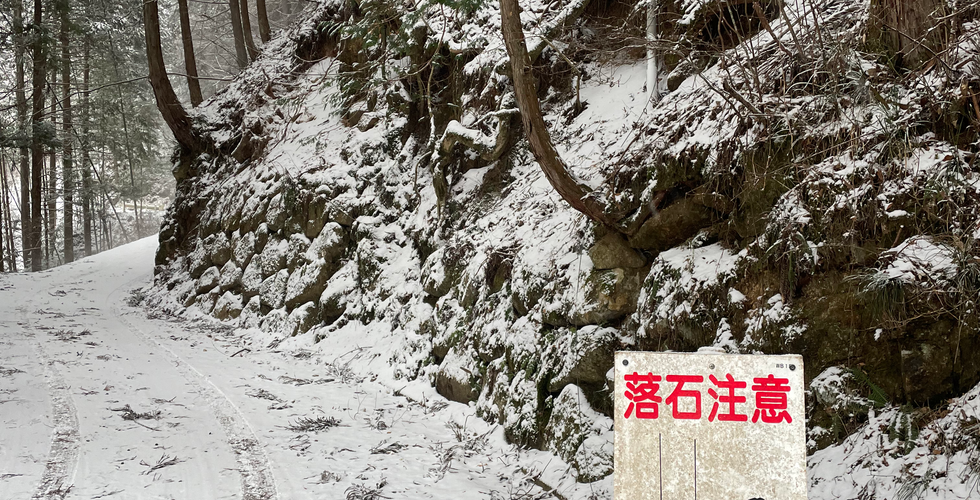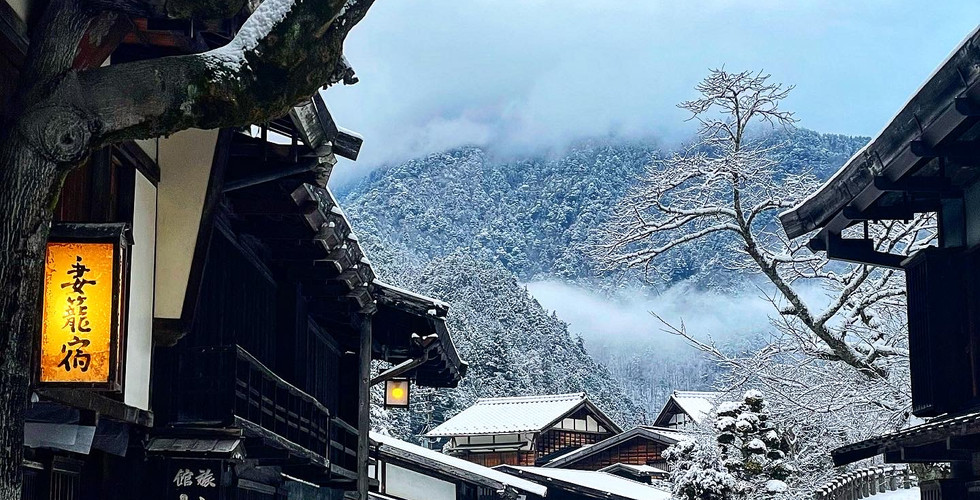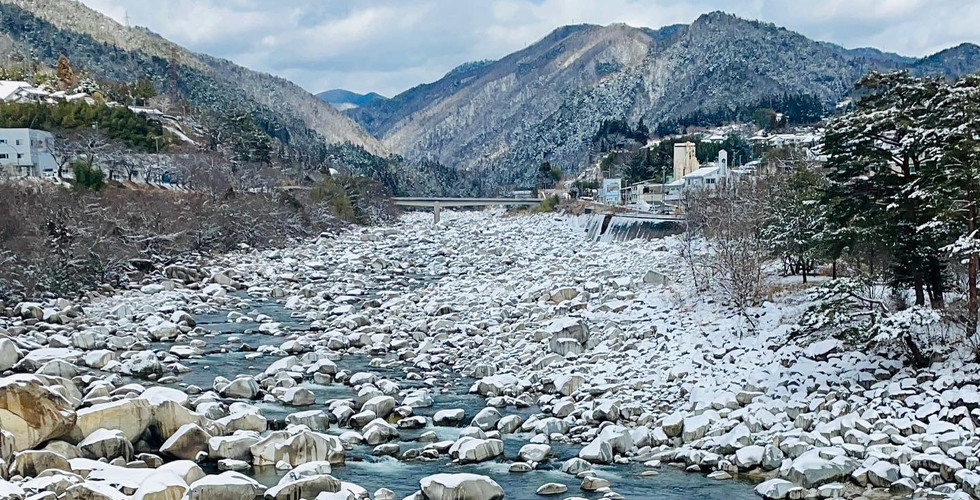The Nakasendo, literally the central mountain route, was a mountainous inland route that once connected Edo (present-day Tokyo) with Kyoto during the Edo period. It was one of the Gokaido (Japan's five major highways) consisting of a network of sixty-nine post towns along its 540-kilometer route. Today, the trail is a network of pavement, side streets, forest paths and cobblestone roads. We learned about this trail while watching a Netflix documentary series about traveling in Japan. Alex and I took a calculated risk by planning to do this in the winter —knowing that it would be covered in snow and potentially present challenges with access. But, we felt experienced enough to go for it and I’m so glad we did! The historic Nakasendo Route and the quaint Edo period (1603-1868) post towns of the Kiso Valley make it feel like you have taken a step back in time to the age of the samurai.

Day 1
We began by taking a train from Kyoto to Nakatsugawa. The trail is easily found from the train station. As we continued down the trail, we wondered through residential areas and it slowly became more and more rural. We had the opportunity to explore parts of the cobblestone trail on our way to Magome. Magome is a former post town in the Kiso Valley, and has been beautifully restored with a broad stone walkway lined with wooden buildings. Since we were there in the off-season, many stores were closed except for a cafe which saved us with warm tea! It began to snow and we got to enjoy the magical stillness that few experience. We stayed at a traditional ryokan, meaning we slept on Japanese futon beds and the inn had a few other traditional Japanese architectural elements, such as a cedar smoke room to keep termites away from the wood. They also have onsens — basically hot tubs from the hot springs in the area. We were given traditional robes to lounge and sleep in. Dinner was several courses of wonderfully tasting and beautifully prepared Japanese dishes made by the host. We headed to the onsen that evening as it began snowing again.

Day 2
After a remarkable breakfast, we went on our way to hike from Magome to Tsumago. We hiked in constant snow, which made everything interesting and different as the day progressed. We definitily got cold, as we were hiking to the highest part of the Nakasendo. We began losing some resolve after about two hours on the trail. We had wet feet, my jacket was wet and losing insulation, and I was doing everything not to complain. We had been told to stop at Tabeta Tea House, which we were nervous might be closed due to the season. To our surprise and relief, it’s actually open everyday, all day, and run by volunteers. This house was constructed in late Edo period (19th century). We ate candy for lunch and sipped on numerous cups of tea, while warming up and drying our clothes by the fire. After arriving at our ryokan all wet and tired, we dropped off our things before heading in to explore Tsumago. Again, because we were there off-season and later in the evening, many shapes were closed except for a few sweet shops. We got a traditional chestnut mochi snack and devoured it. After having candy for lunch, we were ready for dinner. And, thank goodness we were. Our table was jam packed with an incredible meal, including traditional cold soba noodles, hot pot, sushi, and rice sweets.

Day 3
After another early night, we awoke to a breakfast just as incredible as dinner, and made our way into town. A few more places were open, so we got some coffee and did some souvenir shopping before hitting the trail to Junikane. We got to explore Tsumago castle ruins (in the snow), and once we descended, we had the option to stay in the forest or go to the river. We decided to stay lower elevation in case the snow caused an issue on the trail. After being socked in snow for the past few days, this day was memorable because of the incredible views! We had some blue skies and incredible river views most of the day. Once in Junikane, we took the train to Kiso-Fukushima. Our Ryokan was the first place I had a public onsen experience. This meant that hotel guests and public alike could use the space. There is a formality to using an onsen, including being seen showering, thoroughly rinsing, wearing the towel on your head… things like this. Fortunately, it was not very crowded when I used it so I wasn’t being judged so harshly. That evening, the ryokan was offering a free star gazing experience, which Alex and I thoroughly enjoyed!

Day 4
Arguably supposed to be our toughest day, we began our trail at Kiso-Fukushima, over Torri Pass, to arrive in the cute town of Nojiri. We had met an Australian traveler at the tea house a few days before who was concerned about the condition of the pass. He had said there was a lot of ice and sketchy areas that made him feel unsafe without spikes and poles. Our plan was to check it out and turn around if we ever felt unsafe — we could take the train if we wanted to, so no use risking our lives if we didn’t need to. Though the trail was definitely covered in snow, sun from the day before made it soft enough to at least waddle through. We had a total blast being the only ones on the trail, glissading were safe, and just being able to play in the snow. We arrived in Narai quite hungry, and found a place with traditional soba noodles. The town itself was adorable, and out of a fairytale in the rain. The dark, traditional woodwork of the Edo era contrasted beautifully with the snow. Everyone was so friendly, and we just had a great time. Once we were done exploring, we took the train back to Kiso-Fukushima for our last evening on the Nakasendo trail. We headed to a local Sake brewery to find a bottle we liked. We had an incredible river view from our room, and wanted to enjoy it with some sake. A bottle later, we headed to dinner which brought more sake and full tummies.
















































































Comments